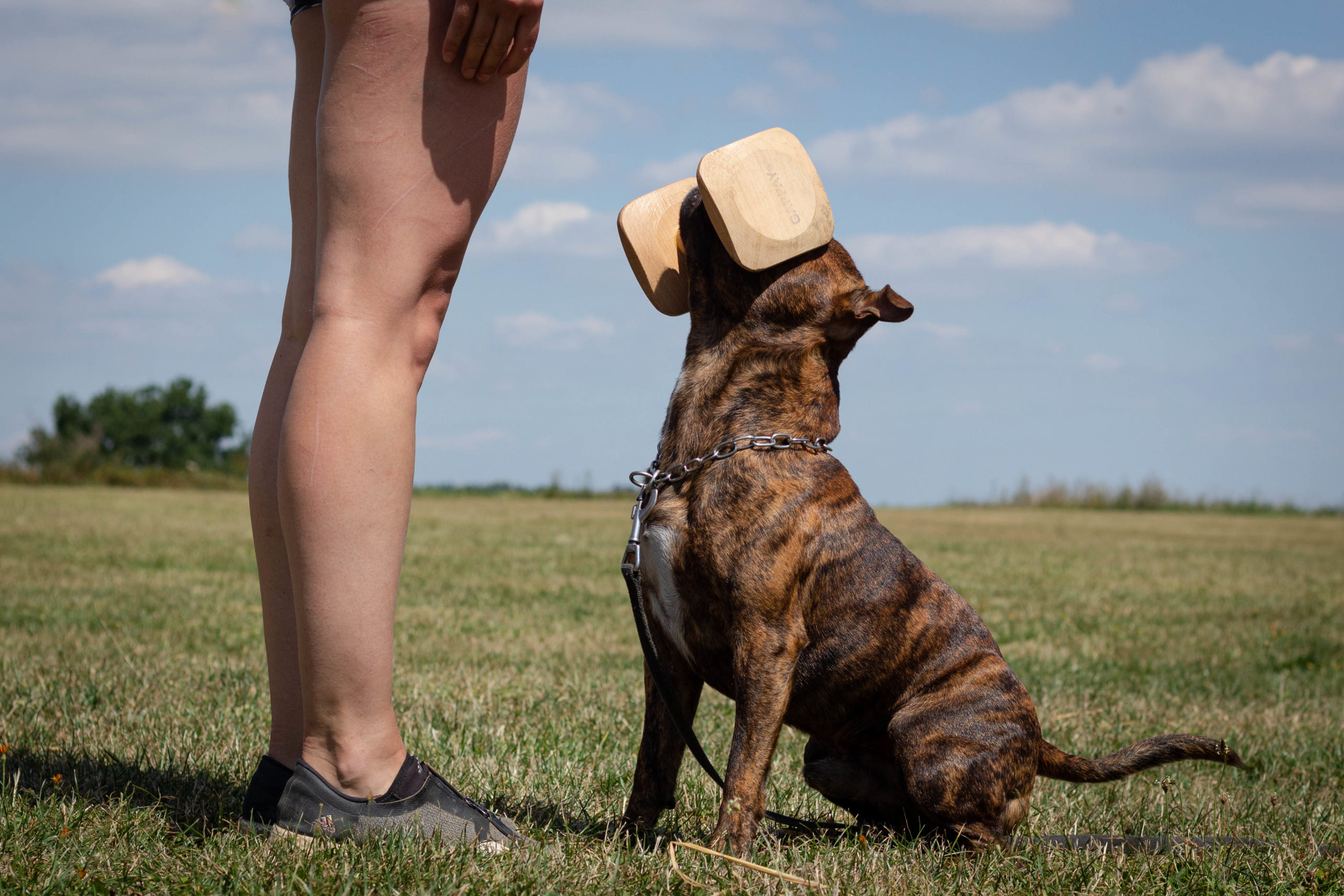
23 Srp Retrieve Components Overview – Part 3: Retrieving
In the first two articles of this series, we discussed everything that happens before you throw the dumbbell and then all the intricacies of throwing and focus. Today, we will continue with the actual sending out and retrieving part of the exercise.
The balance between fetching and sitting
Regardless of which one of the three focus options that we discussed last week you choose for your dog, the procedure after throwing the dumbbell is the same. You let it set on the ground—or in the case that it rolls or bounces, you will wait for a second—and then you give the command to fetch or you reward your dog for his patience.
This is one of the critical balancing acts involved in this exercise. You have to have a good balance between sending your dog to fetch and rewarding him for sitting still, as described in this article. Overdoing it—one way or the other—would either make your dog nervous and not remain still while throwing the dumbbell or make them unwilling to go fetch upon hearing the command.
This balance could make or break your retrieve, so pay close attention to it, and tweak it to perfection. This is the key to balancing out the calm and still part that you should have while throwing the dumbbell with the explosive part of fetching, which contradicts that initial state.
Running towards the dumbbell
After the fetch command comes probably the easiest part of the whole retrieve: running towards the dumbbell. Very rarely have I seen dogs having problems with this part.
Sure, you can have an unmotivated dog who is slow to run for the dumbbell or, more precisely, slow to run anywhere or do anything. However, that is not exactly a problem with the exercise but rather an overall problem with motivation. You can check out this article and try some new methods to reward your dog to make this better if this is something you’re concerned about.
Usually, a properly motivated dog will run towards the dumbbell pretty easily with no problems. You can sometimes encourage him while he runs away from you, but don’t overdo it. He might turn to look at what is going on, and if you do this too often, he might hesitate when there is no encouragement from you—like at the trial.
Picking the dumbbell up
The next part is collecting the dumbbell. Most dogs, I would say probably about two thirds, usually don’t have a problem with this part when the exercise is properly built up and when the dog’s motivation to get back to you and get his reward is high enough.
Sometimes, you have to deal with dogs running over the dumbbell and then turning and collecting it while returning to you, which is not correct. You can also have dogs playing around with the dumbbell, sometimes even using their paws to kick it around, which is obviously a mistake as well.
Usually, these issues arise when your dog’s motivation to return is not high enough, so try working on that. Rarely is it necessary to really work on collecting the dumbbell in particular. If that is the case, though, you can try one of two simple solutions: choose a heavier dumbbell, like the 2 kg one for IGP3, or try throwing the dumbbell to a fence.
A heavier dumbbell compels the dog to take the act of picking it up more seriously. He can’t really play around with it and instead has to focus on collecting it. Some dogs even have a calmer hold with a heavier dumbbell, so that might help you, too.
Additionally, throwing the dumbbell to the fence prevents your dog from running over it. He has to run to it, pick it up, and go back with much fewer options to play around with it. The downside is that this could slow your dog down, so use this tactic with caution, and really throw towards a somewhat see-through fence rather than a solid wall.
Returning with the dumbbell
After collecting the dumbbell, the dreaded return part of the retrieve is up next. I always say that you can recognize a good fetch by looking at the return part. Having a fast, flashy run towards the dumbbell is easy—you can just raise the motivation for the dumbbell, and your dog will run his heart out to get it. Teaching your dog to run back towards you just as quickly is much more difficult.
The point is that your dog should maintain his speed both running away from and running back toward you. If there is a significant speed difference, such as when the dog will usually slow down on his way back, you will lose points.
To achieve this consistency, it is imperative that your dog does not consider the dumbbell to be a toy but rather something uninteresting, only a means to an end—the end being his beloved ball or a favorite treat that he can get from you.
If he views the entire fetch exercise as one long path towards his ball, a path involving grabbing a funny-looking wooden thing on the way because Mum insists on that, he will be just as fast running away from you as he will be running towards you. Make sure your dog thinks about his ball first and foremost and about the dumbbell second.
The dog is now finally returning back to you with the dumbbell—so, actually retrieving—and arguably the most difficult part of the exercise lies ahead: a correct frontsit and hold. We will discuss how to approach this final section next week, so stay tuned!
